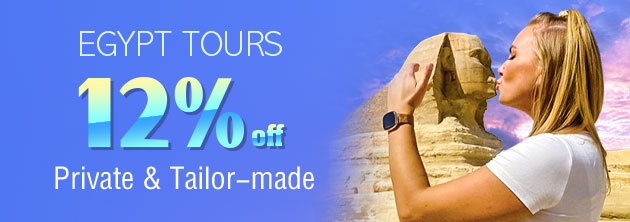Egyptian Art
Egypt, the home to the mighty Nile River and Giant Pyramids, is probably the most popular tourist destinations in the world. Surrounded by the enticing desert and lush deltas, each year close to 13.9 million tourists visit the country.A Brief Introduction to Egyptian Art and Its History
Art had always been an important part of any civilization, and helped the culture to thrive on the pages of history. In ancient Egypt, after a stable government was formed and the basic necessities of the society were fulfilled, people proceeded to create art for themselves. The process began 6000 CE and the mostly comprised crude images of animals and supernatural figures.In the later centuries, Egyptian artifacts and cultural symbols were dedicated to gods – the celestial beings who represented perfect balance and harmony. Art was meant for serving an important purpose – preaching about communal stability and life beyond death.
Egyptians were obsessed with symmetry and tried to bring in a unified balance in their art forms. While the early art pieces were carved on low-raised relief, showcasing the incredible skills of the artists. This section of the artists, in the later centuries, went on create the stunning three-dimensional statues on stones. Some of the fine examples of Egyptian art include the Sphinx, Great Pyramid of Giza, and sophisticated and detailed tomb paintings.
During reign of Old dynasty, art was mostly state sponsored and commissioned by nobles or king. The style and the techniques were predefined, giving the structures a uniformity.
In the later period, a post the collapse of Old Kingdom, art and the artist became free to interpret and create. The tremendous development in art. Mass production of art came to existence, and a production crew took over creating, painting, and selling the art.
Common Characteristics of Egyptian Art
In the ancient Egyptians were obsessed with symmetry and followed a distinctive structure. The central figures, both in paintings and relief, can be seen standing with parted legs. Also, a predefined proportion and measurements were followed while composing the art. The male figures were composed in darker tone, while the female figures were made in lighter colors.Artists in the ancient Egypt used hierarchal proportions to describe the subject’s relative importance in the society. While the gods or the pharaohs were given larger than life structure, while the servants, animals, trees, or entertainers were given smaller figures in a painting.
Symbolism was an important part of the Egyptian art and was frequently used in the paintings and murals. Symbolic use of the colors was very popular as well. Interestingly, the artists rarely left their named after the completion of the artwork. Often the art was a collective work, popularizing anonymity.
Popular Artifacts from Ancient Egypt
Here are some of the popular examples of ancient Egyptian artifacts:1. Egyptian Paintings and Murals
Most promising paintings and murals could be found in the tombs close to the Valley of The Kings in Cairo. These paintings were used to decorate the temple walls, and had an important religious symbolism. According to the ancient Egyptians, the murals on the temple or tomb walls were believed to help the deceased royal to remember their life, after awakening in the afterlife.Few examples of the murals include Egyptian dancing girls (collected from the Shaykh ʿAbd al-Qurnah’ currently at the British Museum, London), ‘Geese scene’ in the Tomb of Nefermaat and Atet, or the reliefs from the Sun Temples at Abu Jīrab are worth a mention.
Some of the most important sculptures of the Egyptian art scene began after 256 BC. Some of the most intense sculptures include Statue of Menkaure with Hathor and Cynopolis, wooden statue of the scribe Kaape, and seated portrait statue of Dersened.
2. Egyptian Architecture
Architecture was one of the strong suits of the Egyptian civilization, and the architects created some of the most stunning monuments. The Great Pyramids of Giza, or The Temple of Isis from Philae Temple are some of the prime examples of architecture.Egyptian Art and Culture in the Modern Times
While the ancient Egypt has had a lot of influence on the west, only a handful people are aware of the current cultural landscape of the country. The Egyptians musicians and performers are revered in Middle Eastern countries, and have a huge fan following in the region.Interestingly, the modern Egyptian art has had an immense influence on the cultural awakening of the nation during the 2011 National Revolution.
While the Egyptian movie business is just a fraction of what it used to be, there are a few movie makers who are making the head turn. People like Youssef Chahine have made revolution in the Egyptian cinema. Post-2011 more filmmakers have entered the industry, and make some noises in the global movie circuit.
Music has its own set of followers in the country. While the old-school music lovers prefer Umm Kulthum, while new generation loves mahraganat music. The mahraganat music is full of expression retelling the story of their struggle.
You May Like:
Egypt Festivals: Exploring the Country’s Roots

